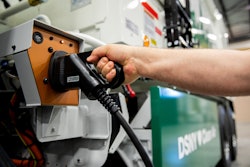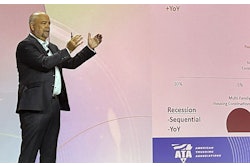Wayne Gretzky, the most famous hockey player in history, once said, “I don’t skate to where the puck is. I skate to where the puck is going to be.” That’s simple advice, with obvious applications to almost any industry where winning has to do with how well you analyze the game and anticipate the future. Fleet owners need to figure out where the market is going to be and how to get there fast, rather than assume that by going where everyone is now that they’ll remain competitive.
Gretzky’s much-quoted advice has some interesting twists. Suppose everyone decides to rush to where the puck is going? You’d have a mob scene, and there wouldn’t be any players in position to set up the point. Which is how some fleets are responding to the driver shortage. With capacity up, a surging economy and a driver shortage, fleets are rushing to attract drivers any way they can.
But some, like Marcia Faschingbauer, president of Excargo Services in Houston, say their strategy is to empower the owner-operators they have and keep them motivated and loyal to their company. Faschingbauer is setting up “assists” that pay off in both the short and long run. “In these good times, you have to be ‘fleet-footed’ and make decisions that reflect the challenges that come with good times,” Faschingbauer says. Excargo’s success with attracting and retaining owner-operators is evident by the increasing number of drivers who are bringing in new drivers via word of mouth. “You have to empower them to feel like they are part of the team. They can’t know about market conditions or what’s going on unless you clearly communicate the message. That’s one of our missions,” Faschingbauer says.
Gretzky’s advice seems like a no-brainer, especially when you’d have to be a real idiot to skate to where the puck used to be. But that’s not to say you don’t keep the past in the corner of your eye. You can’t project the trajectory of something if you don’t know where it started. Fleet owners trying to expand right now but stymied by the lack of new equipment, hours-of-service rules, congestion on the docks and driver shortage are wise to note that this is not a new scenario. Historically, those fleets that can keep their current equipment well-maintained, take care of customers and retain their professional drivers might not be expanding in the traditional sense of adding trucks, but are growing their team nonetheless. The focus of most of Excargo’s current decision-making revolves around responding to where the market is headed and anticipating the market conditions before the curve. “You have to be on top of your game in good times. It’s a different kind of challenge and, admittedly, a good problem to have,” Faschingbauer says.
Eventually, it all comes down to the difference between the game controlling you – and you controlling the game.





![Volvo Vnl Sleeper Review[20]](https://img.ccjdigital.com/mindful/rr/workspaces/default/uploads/2025/11/volvo-vnl-sleeper-review20.lrVppY9UDR.jpg?auto=format%2Ccompress&fit=crop&h=400&q=70&w=600)




